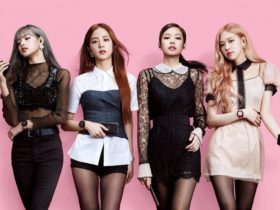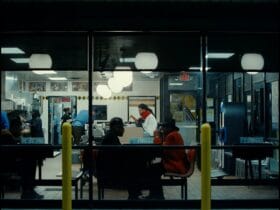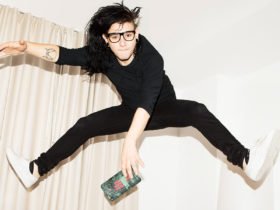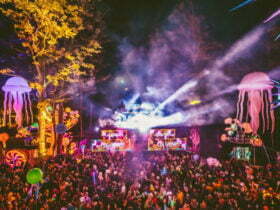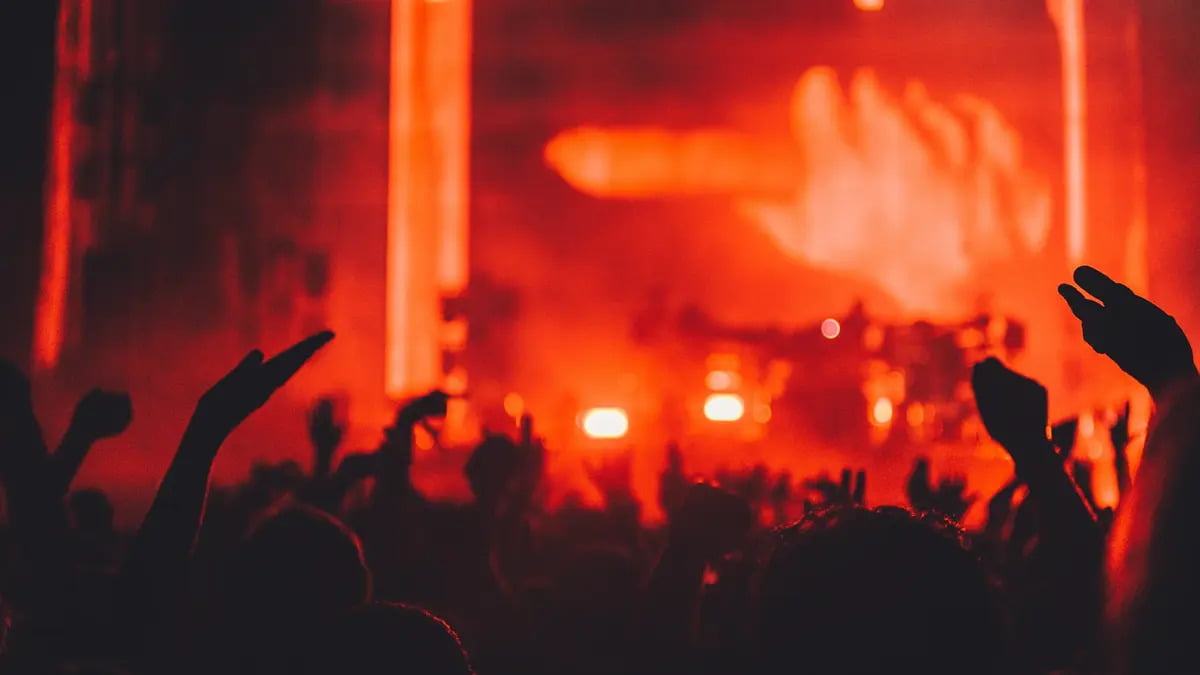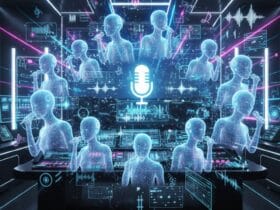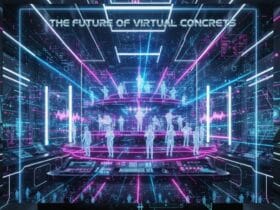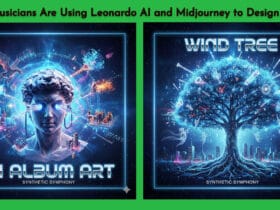Hello folks! How are you doing? In this post, we will consider the raves back in the 90s. Rave parties are famous for loud electronic music, massive crowds, and fun. Mostly these parties are about Plur which means Peace, Love, Unity, and Respect. The rave communities don’t care about anything except fun. People attend raves to chill out no matter what you wear or where you are from. Raves have evolved their own unique culture.
Rave parties began in Belgium, Canada, Germany, Australia, Europe, the UK, and the US in the early 1980s. The first rave parties often were underground parties. Youth tend to crave raves for freedom of expression, loud music, and unlimited enjoyment. Thousands of people unite to enjoy without any restriction Also, you must know about what is a rave party and culture.
Do you know how rave parties were in the 1990s? Let’s explore the raves in the decade. From the party culture to classic fashion to immense crowds, let’s understand deeply the rave parties in the 1990s.
Why Were Rave Parties Illegal in the 90s?
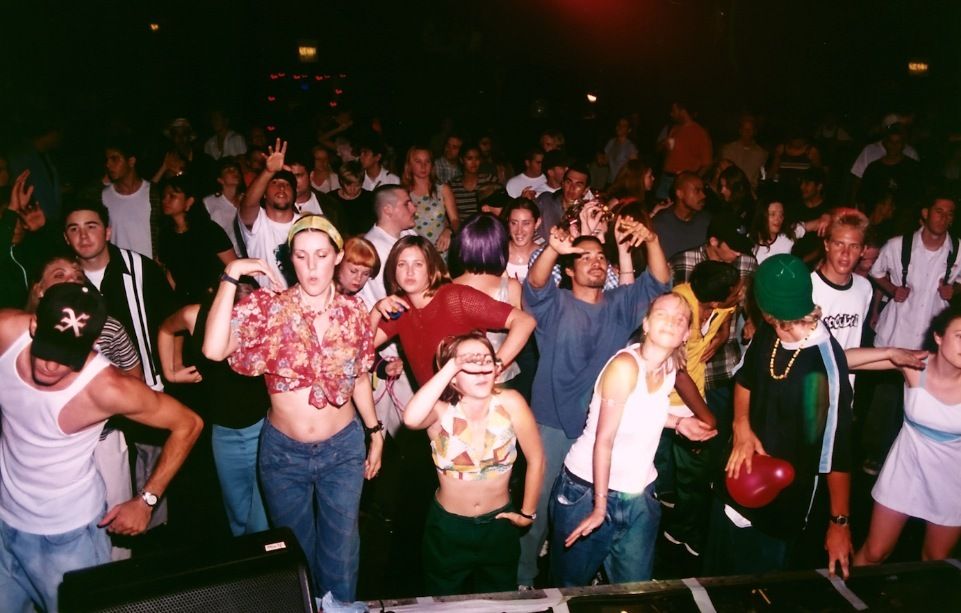
Raves are popular for gathering of massive people. Rave culture used to remain underground due to time limits after the legal hours primarily in the US. Apart from that, rave parties were illegal in the 90s due to substances such as MDMA the “club drug”, cannabis, amphetamine, GHB, ketamine, methamphetamine, cocaine, and LSD.
The UK approved the Entertainment (Increased Penalties) Act in 1990, which fines up to £20,000 for conducting unlawful raves or parties. Organizers got past the regulations by announcing event details at the last minute.
Ravers might also contact a phone number where the voicemail includes information about the event. The rave on Castlemorton Common in Worcestershire in 1992 was planned to be a small celebration for tourists and became the largest illegal rave in UK history.
After a big event, when several different sound systems, including Bedlam, Circus Warp, DIY, and Spiral Tribe, sprang up near Castlemorton Common, the illegal free party scene also peaked.
The state took action. Multiple sections of the Criminal Justice and Public Order Act of 1994 targeted electronic dance music played at raves. The Criminal Justice and Public Order Act gave police the authority to break up a rave in the open air.
EDC Hosted Rave Parties Since the 1990s
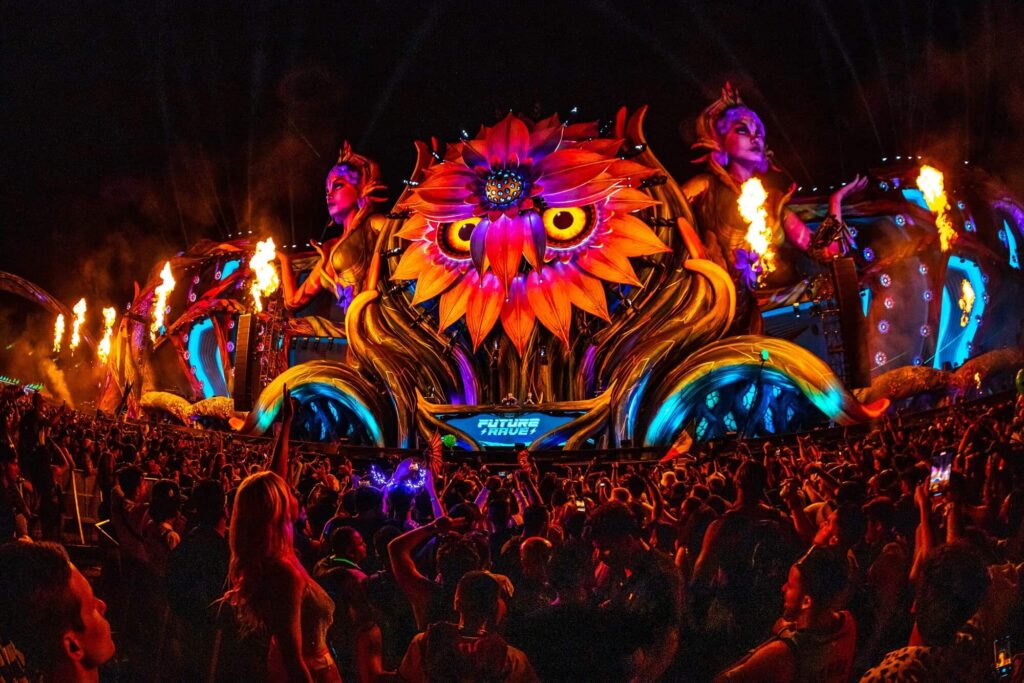
The Electric Daisy Carnival, or EDC, has hosted parties since the early 1990s. The event became popular through the years becoming one of the world’s largest dance music events. The first Electric Daisy Carnival was organized by Stephen Hauptfuhr in 1991.
Large-scale commercial events have been held at the same venues with recurring themes every year in recent years. Mass-attendance venues are usually the same for Tomorrowland and Electric Daisy Carnival events.
What Did People Wear to Raves in the 90s?
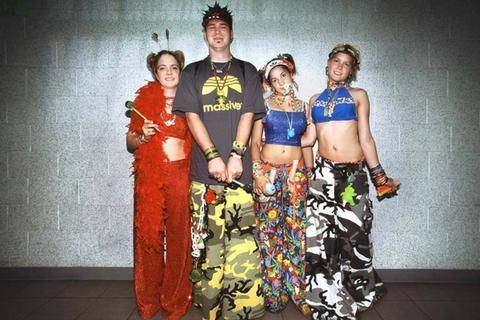
Since the late 1980s, rave fashion has evolved alongside different generations of ravers. Many rave fashion styles have spread worldwide. Early rave parties featured costume-like clothing with signal color looks, such as protection suits, safety vests, dust, gas masks, and accessories like vacuum cleaners or cyberpunk-inspired goggles.
READ MORE- How To Approach Rave Girls For Dating
The 1990s saw a lot of fashion trends, such as bell bottoms, neoprene jackets, studded belts, platform shoes, coats, scarves, and bags made of flokati fur, fluffy boots, and phat trousers. Bright and neon colors were also popular. Ravers also popularized dreadlocks, tattoos, piercings, and brightly colored hair.
Clothing featuring slogans like “Peace, Love, and Unity” and smiley-face T-shirts originally appeared during the 1980s acid house trend. Plastic aesthetics, DIY, 1970s, and diverse fetish styles were also prominent motifs in the early rave scene.
Furthermore, accessory items often used were truck tarpaulin-made record bags, white gloves, glow sticks, feather boas, whistles, pacifiers, wristbands, and collars.
This gave rise to the first commercial rave fashion styles in the early 1990s, which the fashion industry immediately adopted and sold under the label Clubwear. Different clothing codes also developed throughout the different rave subcultures.
The most popular ones are handcrafted Kandi bracelets. They lit in the UV light. Rave attendees have a PLUR handshake while exchanging Kandi bracelets.
Raves Witness Immense Crowds in the Era
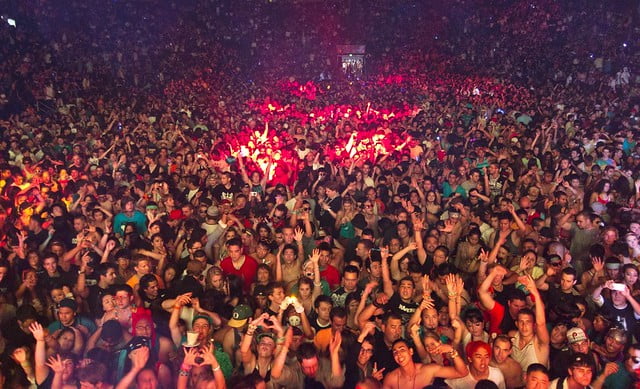
Throughout the 1990s, a new youth movement in Germany and Europe included rave culture. DJs and producers of electronic music, like Westbam, declared the existence of a raving society and positioned electronic music as a real rival to rock & roll.
In fact, rave culture and electronic dance music become popular movements. Tens of thousands of people have attended raves since the mid-1990s; youth publications provide style advice, and television networks have started house and techno music-focused music magazines.
It was not until the late 1980s and early 1990s that the UK gained recognition for its rave culture. By 1991, large-scale legal raves were being held worldwide in fields and warehouses by groups like Fantazia and Raindance.
At that time, the illegal free party scene peaked following a big festival, where several DIY, Spiral Tribe, Bedlam, and Circus Warp sound systems sprang up on Castlemorton Common.
In late 1991, raves began to spread throughout northern California, including Sacramento, Oakland, and Silicon Valley (Palo Alto, San Jose). Massive parties were held outside fields, airplane hangars, and hilltops surrounding the valley.
In Australia, raves were conducted in locations often utilized for manufacturing and industrial activities, such as factories, warehouses, and carpet showrooms. Furthermore, suburban sites were also utilized; frequent venues included circus tents, train stations, and basketball courts.
In the mid-late 1990s, the death of Anna Wood at a licensed inner-city Sydney venue that was hosting a rave party was the reason for a decline in rave crowd. Even into the 2000s, many raves continued at permitted venues, making them less underground than in the 1990s.
Popular Music of the 90s Rave Parties
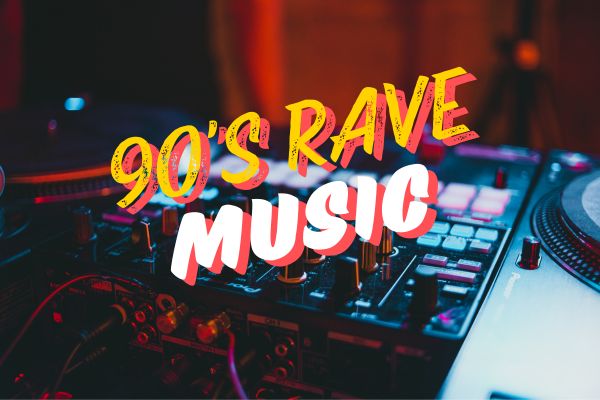
Raves and music go hand in hand. Loud music has been one of the primary attractions of rave events. Be it young ones, or adolescents, everyone enjoys mindblowing music. Let’s consider the music genres popular in the rave culture. Following are the most popular music genres:
- House Music
- Hardcore Techno
- Electro Music
- Drum and Bass
- Free Tekno
- Down Tempo
- Trance Music
- Industrial Dance
Rave music incorporates psychedelic, acid house, and EDM music during the late 1980s. Music genres including breakbeat, hardcore, post-industrial, happy hardcore, drum & bass, acid, techno, electronica, and gabber featured in the rave parties during the 90s. Acid house or house music is one of the primary music genres used in raves.
The 1990s were essential in the evolution of rave music. During this time, the genre grew in popularity. Belgian hardcore techno music also called the rave genre in the early 1990s.
Moreover, Free Tekno electronic music originated in the early 90s during illegal parties sponsored by sound systems. It was also played in warehouses, abandoned buildings, and open-air festivals known as Teknivals.
Trance music originated from the acid-house movement and rave culture. Drum ‘n’ bass is still the most popular genre of breakbeat music during rave parties.
Why do People like to Attend Rave Parties?
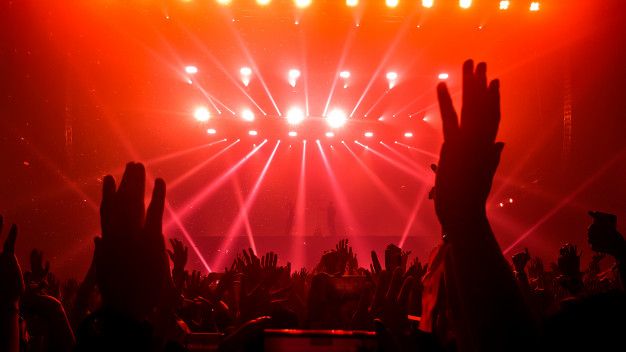
Raves have drawn millions of people for decades. These parties and music festivals offer music, and freedom to enjoy in a secluded community of ravers. Interestingly, attendees came from different corners of the world to feel the power of electronic music and a crowd with the same energy to have fun with.
Most importantly, Raves are best known for the PLUR which means Peace, Love, Unity, and Respect. People want to escape from their stressful and boring lives.
Therefore, raves and music festivals seem to be the stressbusters with a massive crowd of people chilling together. Everybody is equal there, nobody cares about other’s backgrounds and personal lives. Isn’t it enough to enjoy a soulful party without limits and restrictions?
Moreover, there is no restriction on the type of apparel at rave parties. One can wear whatever they feel comfortable with. You can see people wearing revealing dresses while others in casual ones. That’s another reason people like to attend raves.
EDM music and EDM artists have a separate fanbase. Electronic dance music acts as the fuel to the endless energy of music festivals and rave parties. The audience eagerly waits to listen to their favorite EDM artists live out there.
Rave Parties Have Evolved Over Time
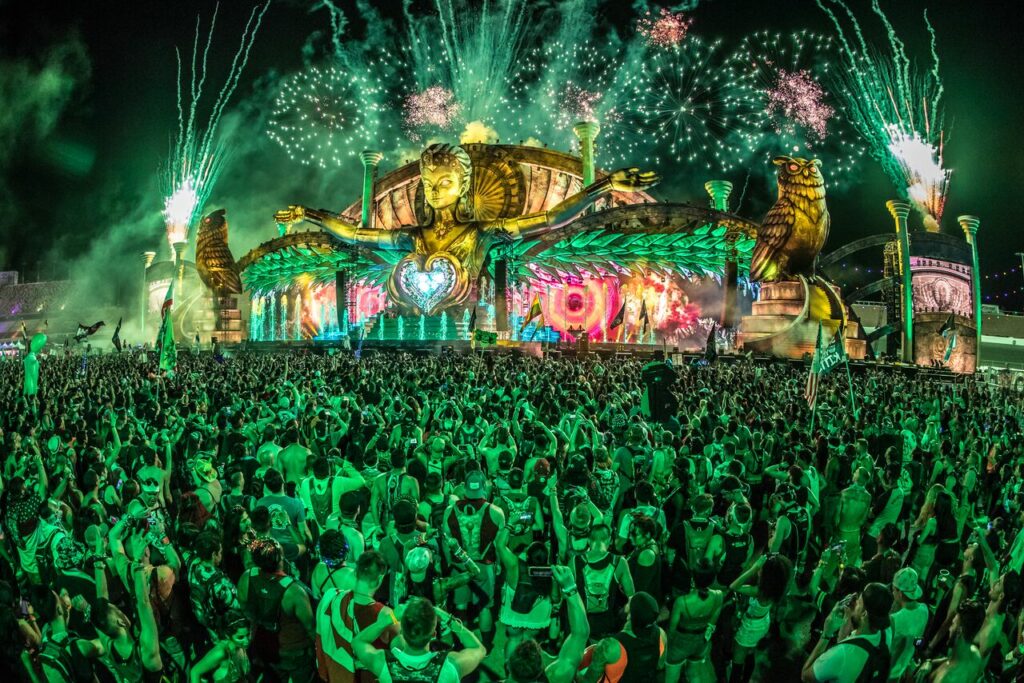
Rave parties are not the same as in the 80s and 90s. They have evolved over the years. Earlier, raves were considered not so good because of drug association. MDMA, Ketamine, Cocaine, and LSD were the primary drugs used in the raves.
While in the 2000s, popular club drugs were 2C-I, 2C-B, DOB, DMT, and NBOMe. Drug overdoses, criminal offenses, and alcohol use sparked several controversies.
However, the 2010 EDC event grabbed worldwide attention because of a drug overdose and the death of a 15-year-old girl. The popularity of rave culture didn’t decline even after that incident.
Raves have become sober before earlier. Attending raves doesn’t necessarily mean consuming drugs for every attendee. Those who want to have drugs are free to do so and have fun at the raves.
Earlier in the 90s, rave parties were usually free. Raves became popular and sponsors started commercializing them. The bigger events have become costlier nowadays.
Well, colorful outfits and Kandi jewelry have been popular in the rave culture. They never went out of trend. Contrarily, a strictly black aesthetic somewhat influenced by the dark scene emerged in the techno movement in the 2000s, beginning with Berlin techno clubs like Berghain.
There are also strict minimum clothing codes for some rave events, including Sensation, which require attendees to wear all black or all white.
Raves may go for long, with some gatherings lasting 24 hours or all night. Modern rave venues try to immerse the raver in a fantasy-like realm. The Raving ethos may incorporate indigenous imagery and mysticism.
Sacred images from primitive cultures decorate the walls, goddess altars are set up and are performed over the turntables and the dance floor.
Glowsticking, glowstringing, gloving, and lightshows are four light-oriented dances ravers engage in. Gloving has developed into a distinct dancing style that has experienced rapid growth. To keep up with the rhythm of the music, glovers move their hands and fingers.
We have considered how music, fashion, and the popularity of the raves in the 90’s era. If you found this post helpful, don’t forget to like and share it. Follow SiachenStudios to get more interesting posts.


